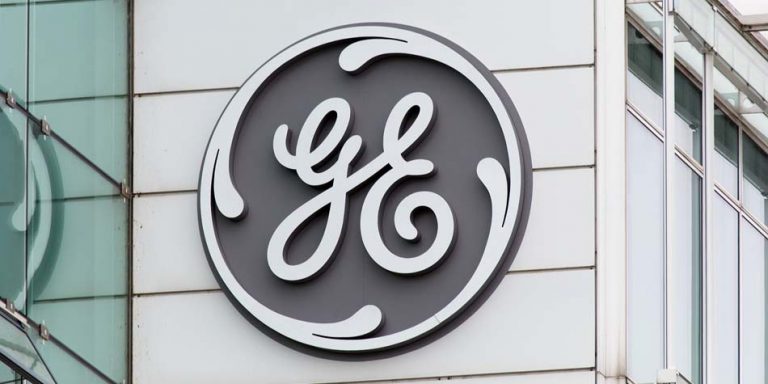As recently as January 2017, General Electric (NYSE:GE) traded for more than $30 per share. It has subsequently lost almost two-thirds of its value. The last time GE stock collapsed this badly was during the worldwide financial crisis. GE, which at the time owned a major finance business, was understandably affected by the crisis.
This time around, management can’t blame macro economic malaise for its troubles. GE’s most recent slump has come as the economy is surging and nearly all other major industrial firms have seen their stocks soar. How did GE stock end up on the brink of falling back to single digits, and what could possibly enable the company to turn things around?
Feels Like Capitulation
GE stock has plunged over the last few trading days, hitting levels not seen since the depths of the financial crisis. With its latest 10% decline occurring in a week, GE stock is sharply oversold. And sentiment towards GE stock is terrible. One poll on Twitter (NYSE:TWTR), for example, asking whether GE will hit $12 or $11 next (it was at $11.50 at the time) found that 70% of participants (as of this writing) voted for $11 and only 30% believed that GE stock was more likely to bounce. On social media, more and more people are saying that GE stock is nearly guaranteed to reach single digits. Technical traders are calling for a retest of the stock’s financial crisis low of $6 per share.
Often, extremely negative sentiment marks a stock’s low. As the adage goes, if everyone is already bearish, who is left to sell the stock? Alas, GE stock has had many capitulation-like moments during its decline from $32 to $11.50. Odds favor a short-term bounce in GE stock, but that doesn’t necessarily imply that the shares will embark on a sustainable recovery.
Big Moves Needed
One of the more surprising parts of General Electric’s decline is that its previous CEO, Jeff Immelt, held on as long as he did. Immelt took over for management legend Jack Welch in 2001 and was GE’s CEO until late 2017. Immelt stayed at the helm even though GE nearly went belly up during the financial crisis. Although GE stock badly trailed the broader market, Immelt was given plenty of opportunities to try to revive the company’s fortunes.
His replacement, John Flannery, will not have as many chances. Already, after a rough year, people are calling for his head. With activist investors demanding changes, Flannery has been motivated to pursue radical strategy shifts to try to turn the company around.
At the moment, the company appears to be relying most on financial engineering. GE announced plans to offload its stake in Baker Hughes (NYSE:BHGE) just a year after acquiring it. That will significantly simplify the company, but reversing course so quickly indicates that the company’s strategy was faulty. Additionally, the company is spinning off its healthcare arm, which has historically been a cash cow for it.
Will General Electric Eliminate Its Dividend?
It would have seemed unimaginable for GE to eliminate its dividend even a few months ago. But at this point, General Electric has to seriously consider slashing its dividend again, if not eliminating it entirely. The ongoing problems with GE Power in particular threaten to send the company’s financial metrics further downward. And the company has to consider steps to prevent the further erosion of its credit rating.
The company is still well within investment grade territory, which is a virtual necessity for a conglomerate with its sort of funding needs. However, the plan to spin off GE Healthcare caused consternation among the credit rating agencies, who viewed it as a clear negative for the company’s balance sheet.
Let’s be frank. GE has serious problems across multiple business lines. If it keeps spinning off and selling its stronger assets, it will have less and less cash to support its sizable debt. General Electric really should consider getting rid of the dividend to conserve much-needed funds until its situation stabilizes.
The Verdict on GE Stock
I can see why people want to believe that GE stock has bottomed. The company is an American icon with fantastic brands. With the economy doing well, GE should be able to turn things around. And since its management knows the clock is ticking, it will make big moves to try to fix the mess it’s in.
Still, until more tangible signs of progress appear, it’s hard to recommend GE stock just yet. Yes, there is the possibility that the shares will rally before it becomes apparent that the company has turned the corner. Perhaps $11.50 will be seen with hindsight as a fantastic entry point. On the other hand, numerous highly intelligent investors have been buying GE since its share price was in the 20s, and it keeps on dropping. When we see shareholders hoping that some big investor, such as Buffett’s Berkshire Hathaway (NYSE:BRK.A,NYSE:BRK.B), will come in and rescue the firm, we can see that GE’s situation is severe.
Given GE’s reliance on access to capital to run much of its business, it remains in a dangerous place. Any sort of shock, from a downturn in the economy to escalating trade war jitters or other macro factors, could trigger another round of selling of GE stock. And a further reduction in the dividend would probably cause income investors to bail out of the stock as well. Even at $11.50, GE stock can still drop further.
At the time of this writing, Ian Bezek owned BRK.B stock and had no position in GE stock.

